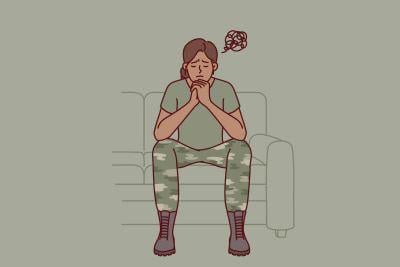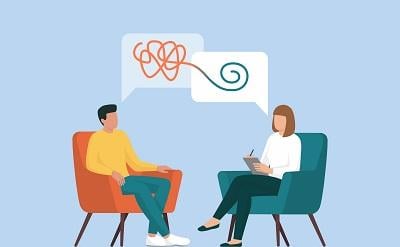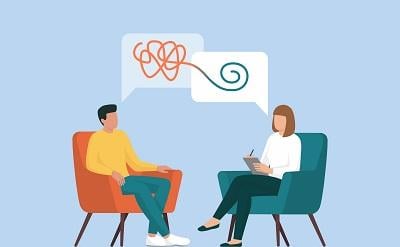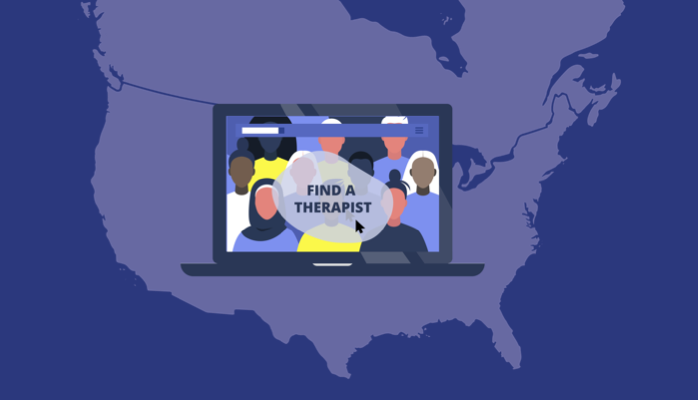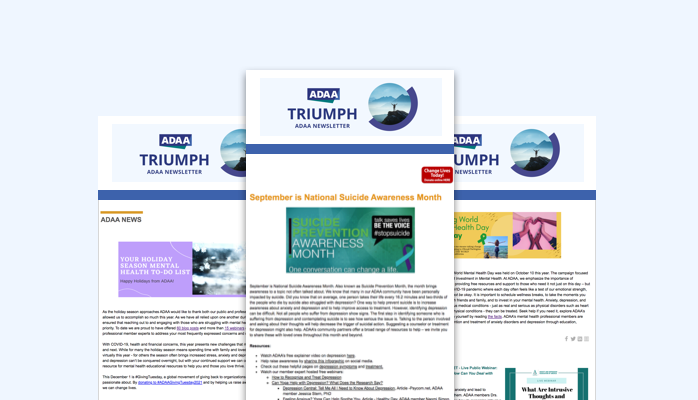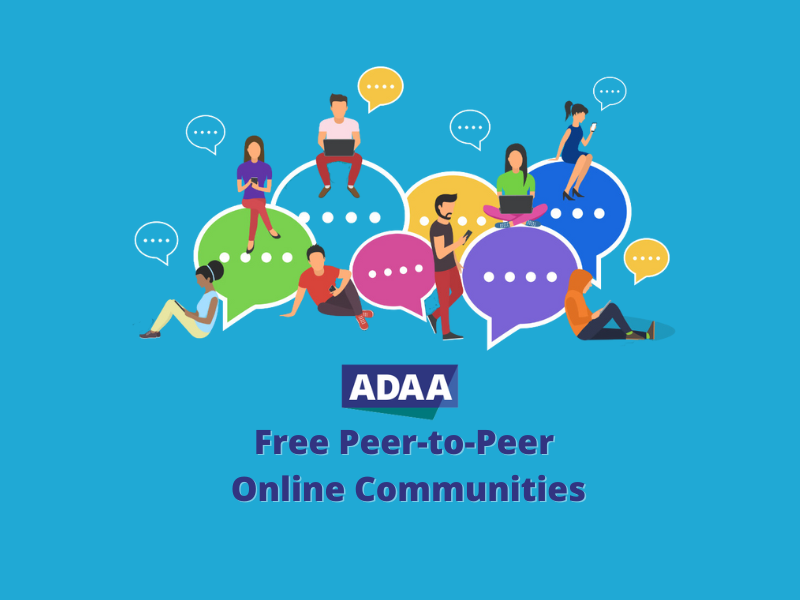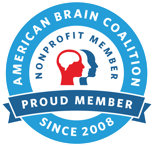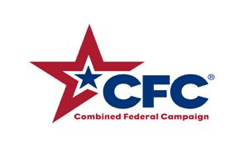Post-traumatic Stress Disorder (PTSD)
Understanding PTSD
Symptoms
Treatment & Facts
Resources
- More than 8 million Americans between the age of 18 and older have PTSD.
- 3.6% of the US Adult population experienced post-traumatic stress disorder (PTSD) in the past year.* (National Institute of Mental Health)
- 67 percent of people exposed to mass violence have been shown to develop PTSD, a higher rate than those exposed to natural disasters or other types of traumatic events.
- People who have experienced previous traumatic events run a higher risk of developing PTSD.
- PTSD can also affect children and members of the military: Watch a video about Staff Sgt. Stacy Pearsall, a combat photographer who experienced PTSD. See how she got help.
Screen yourself or a loved one for PTSD.
PTSD Treatment Information
The main treatments for people with PTSD are specific short-term psychotherapies. These treatments are described below. Everyone is different, so a treatment that works for one person may not work for another. Some people may need to try different treatments to find what works best for their symptoms. Regardless of which option you chose, it is important to seek treatment from a mental health professional who is experienced with PTSD.
Psychotherapy
Cognitive Behavior Therapy (CBT):
CBT is a type of psychotherapy that has consistently been found to be the most effective treatment of PTSD both in the short term and the long term. CBT for PTSD is trauma-focused, meaning the trauma event(s) are the center of the treatment. It focuses on identifying, understanding, and changing thinking and behavior patterns. CBT is an active treatment involved the patient to engage in and outside of weekly appointments and learn skills to be applied to their symptoms. The skills learned during therapy sessions are practiced repeatedly and help support symptom improvement. CBT treatments traditionally occur over 12 to 16 weeks.
Main Components of CBT:
While different CBTs have different amounts of both exposure and cognitive interventions, they are the main components of the larger category of CBTs that have been repeatedly found to result in symptom reduction.
- Exposure therapy. This type of intervention helps people face and control their fears by exposing them to the trauma memory they experience in the context of a safe environment. Exposure can use mental imagery, writing, or visits to places or people that remind them of their trauma. Virtual reality (creating a virtual environment to resemble the traumatic event) can also be used to expose the person to the environment that contains the feared situation. Virtual reality, like other exposure techniques can assist in exposures for treatment for PTSD when the technology is available. Regardless of the method of exposure, a person is often gradually exposed to the trauma to help them become less sensitive over time.
- Cognitive Restructuring. This type of intervention helps people make sense of bad memories. Oftentimes people remember their trauma differently than how it happened (e.g., not remembering certain parts of the trauma, remembering it is a disjointed way). It is common for people to feel guilt of shame about aspects of their trauma that were not actually their fault. Cognitive restructuring helps people look at what happened with fact to get a realistic perspective on the trauma.
What is CBT? Listen to this podcast.
It is important for anyone with PTSD to be treated by a mental health care professional who is experienced with PTSD. Some people will need to try different treatments to find what works for their symptoms.
Description of Specific CBTs for PTSD:
- Cognitive Processing Therapy (CPT) is an adaptation of cognitive therapy that aims toward the recognition and reevaluation of trauma-related thinking. The treatment focuses on the way people view themselves, others, and the world after experiencing a traumatic event. Often times inaccurate thinking after a traumatic event "keep you stuck" and thus prevent recovery from trauma. In CPT you look at why the trauma occurred and the impact it has had on your thinking. It can be especially helpful for people who, to some extent, blame themselves for a traumatic event. CPT focuses on learning skills to evaluate whether you thoughts are supported by facts and whether there are more helpful ways to think about your trauma. There is strong research support showing the effectiveness for people recovering from many types of traumas.
- Prolonged Exposure (PE) is another form of CBT that relies more heavily on behavioral therapy techniques to help individuals gradually approach trauma related memories, situations, and emotions. PE focuses on exposures to help people with PTSD stop avoiding trauma reminders. Avoiding these reminders may help in the short term, but in the long term it prevents recovery from PTSD. PE uses imaginal exposures, which involve recounting the details of the trauma experience, as well as in vivo exposures, which involve repeatedly confronting trauma-related situations or people in their life that they have been avoiding. There is strong research support showing PEs effectiveness across a wide range of traumas.
- Stress Inoculation Training (SIT) is another type of CBT that aims to reduce anxiety by teaching coping skills to deal with stress that may accompany PTSD. SIT can be used as a standalone treatment or may be used with another types of CBTs. The main goal is to teach people to react differently to react differently to their symptoms. This is done through teaching different types of coping skills including, but is not limited to, breathing retraining, muscle relaxation, cognitive restructuring, and assertiveness skills.
Other PTSD Treatments:
There are other types of PTSD interventions that are not considered CBTs.
- Eye Movement Desensitization and Reprocessing (EMDR) is a form of psychotherapy that involves processing upsetting trauma-related memories, thoughts and feelings. EMDR asks people to pay attention to either a sound or a back-and-forth movement while thinking about the trauma memory. This treatment has been found to be effective for treating PTSD, but some research has shown that the back-and -forth movement is not the active treatment component but rather the exposure alone is.
- Present Centered Therapy (PCT) is a type of non-trauma focused treatment that centers around current issues rather than directly processing the trauma. PCT provides psychoeducation about the impact of trauma on one’s life as well as teaching problem solving strategies to deal with current life stressors.
Medications:
Medications are sometimes used as an adjunct to one of the therapies described above. One of the more common types of medications used are selective serotonin reuptake inhibitors (SSRIs). SSRIs are antidepressants, and depressed mood can be part of PTSD. Also sometimes used as a short term and adjunctive treatment are benzodiazepines. Benzodiazepines are quick-acting medications that are effective but can be habit forming.
If PTSD is a problem for you or for someone you care about, seek out a consultation with an experienced mental health professional. PTSD is a treatable condition -- find out what help there might be for you or your loved one.
ADAA Resources
- MDMA May Help Treat PTSD – but Beware of Claims that Ecstasy is a Magic Bullet - Blog Post
- How to Talk to Your Kids About Violence - Response to the Las Vegas Shootings - Blog Post
- Talking to Children and Teens After a School Shooting - Blog Post
- How to Prevent Trauma from Becoming PTSD - Blog Post
- Be There for Women Veterans in Your Community - Blog Post
- Healing Invisible Wounds - Webinar
- Trastorno de Estrés Post-Traumático - Webinar
- PTSD: What I Should Know About Current Treatments - Webinar
- Non-Military PTSD - Webinar
- Screen yourself or a loved one for PTSD
- ADAA PTSD brochure
Meet the ADAA PTSD Special Interest Group and learn about their research and treatment work.
This page was updated June 2021
